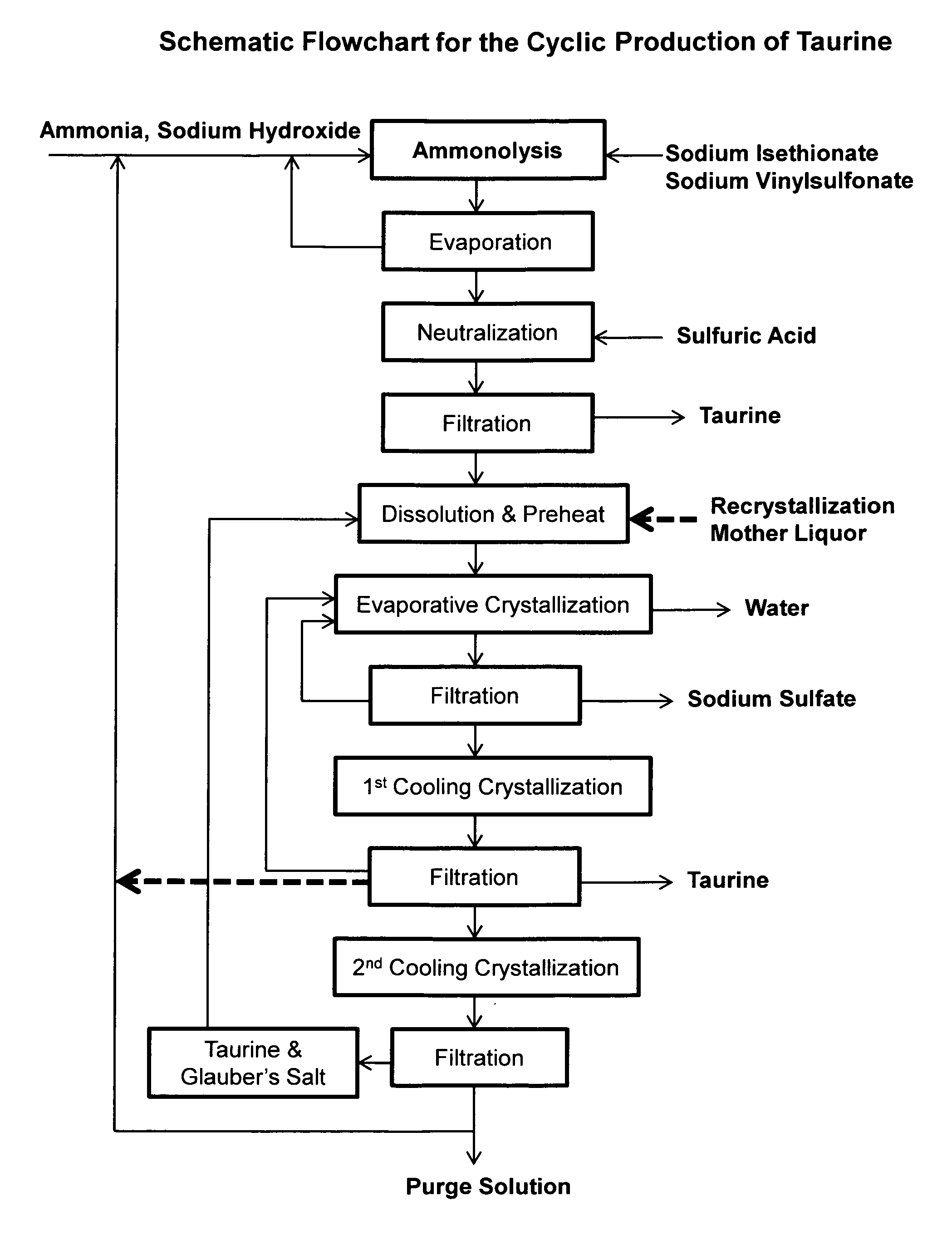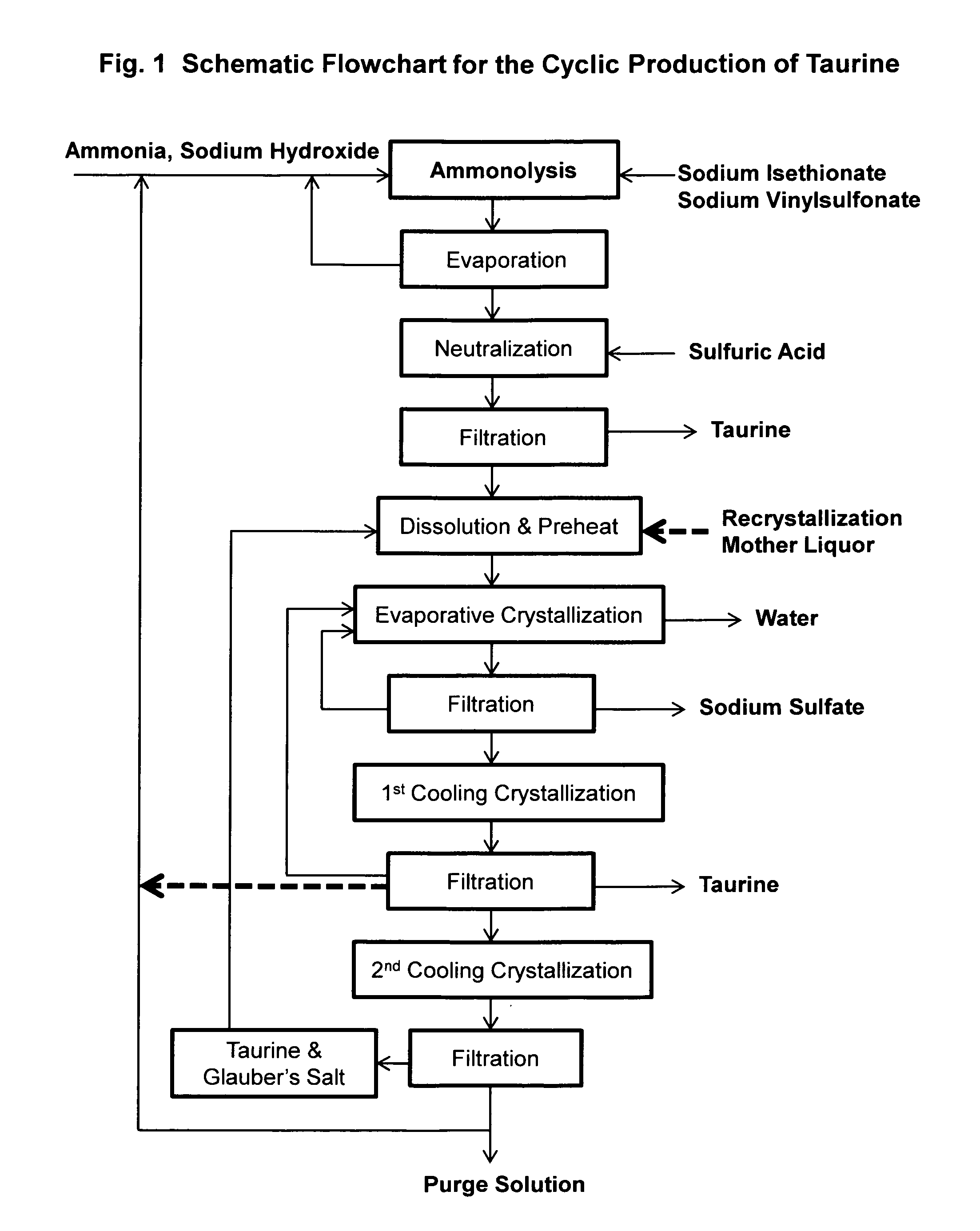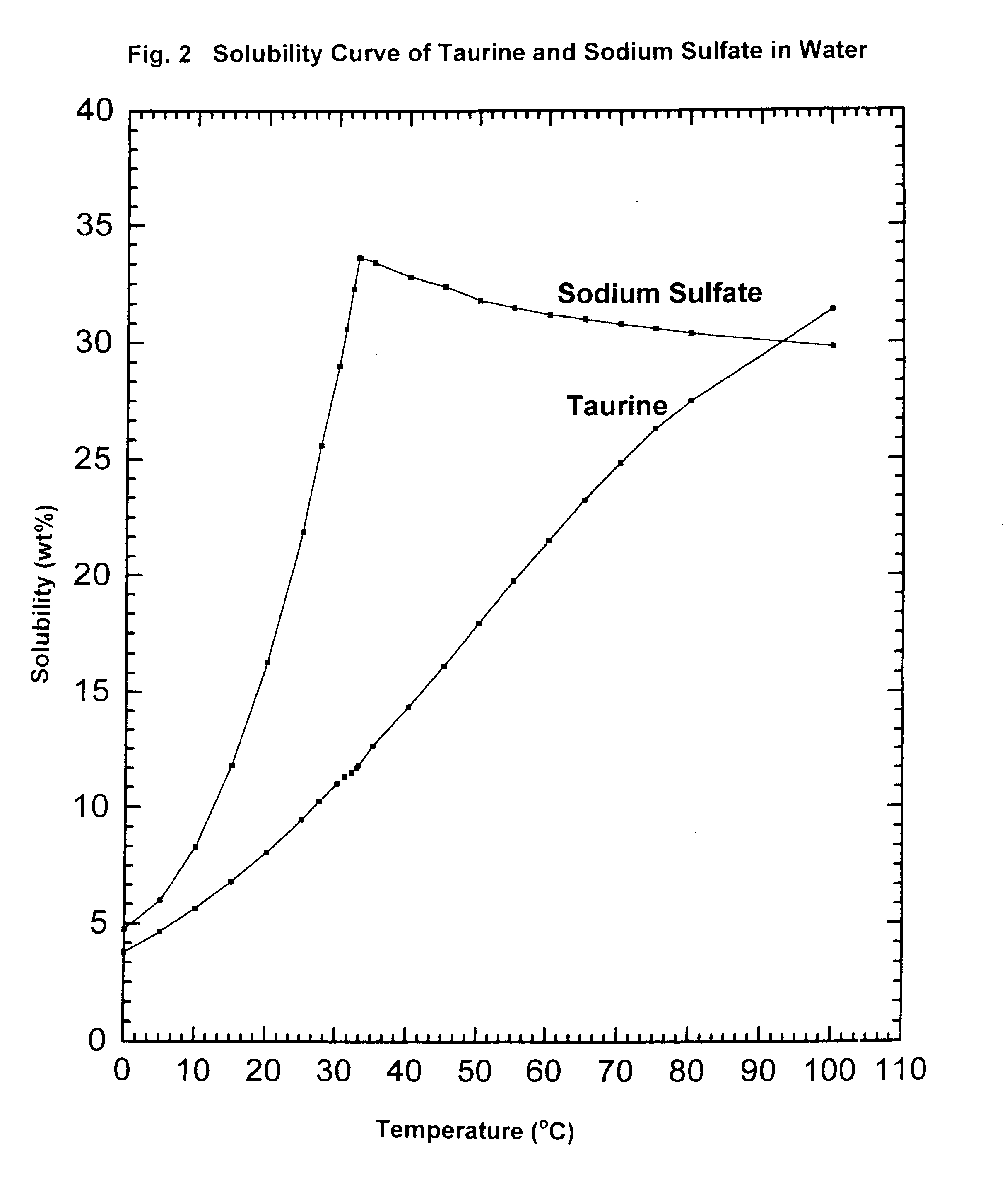Process for producing taurine from alkali taurinates
a technology of alkali taurinate and production process, which is applied in the field of process for producing taurine from alkali taurinate, can solve the problems of large waste stream, low overall yield, and inability to meet the requirements of ethylene oxide production,
- Summary
- Abstract
- Description
- Claims
- Application Information
AI Technical Summary
Benefits of technology
Problems solved by technology
Method used
Image
Examples
example 1
[0043]This example relates to the preparation of sodium ditaurinate and its reaction with aqueous ammonia under ammonolysis reaction conditions.
[0044]Into a 1 L flask, equipped a refluxing condenser, is added 31.5 g (0.30 mole) of diethanolamine and 300 mL of dichloroethane, then 51.0 mL of thionyl chloride. Solid suspension formed immediately after the addition of thionyl chloride and then dissolved upon warming to 50° C. During refluxing, the solid suspension is dissolved and then the crystalline solid appears. The crystalline suspension is refluxed while being stirred for 3 hrs. The reaction is quenched by adding 20 mL of methanol and the solvents are removed under vacuum. A white crystalline material, bis(2-chloroethyl)amine hydrochloride, weighted 53.0 g, is obtained in a quantitative yield.
[0045]To the flask is added 500 mL of deionized water, 100 g of sodium sulfite. The solution is stirred at a temperature first at 50-60° C. for 3 hrs, then at 95° C. for 4 hrs. HPLC and LC-M...
example 2
[0050]This example relates to the preparation of sodium tritaurinate and its reaction with aqueous ammonia under ammonolysis reaction conditions.
[0051]Into a 1 L flask, equipped with a refluxing condenser, is added 29.8 g (0.20 mole) of triethanolamine, 300 mL of dichloroethane, then 51.0 mL of thionyl chloride. The mixture is heated to reflux for 4 hrs. The reaction is quenched by adding 20 mL of methanol. Removal of solvent gives a white crystalline mass of tris(2-chloroethylamine) hydrochloride in quantitative yield.
[0052]To the flask is added 500 mL of deionized water, 100 g of sodium sulfite. An oil phase is separated first. After heating at 60° C. for 2 hrs and 98° C. for 5 hrs, the oil phase disappears and a clear solution is obtained. HPLC and LC-MS shows complete conversion of the starting material to the desired sodium tritaurinate.
[0053]The crude reaction solution is transferred to a 2 L autoclave, to which 26 g of sodium hydroxide and 600 mL of 25% aqueous ammonia are ad...
example 3
[0055]This example demonstrates the conversion of sodium ditaurinate and sodium tritaurinate in the recrystallization mother liquor to sodium taurinate.
[0056]To 200 mL of the mother liquor from 2nd cooling crystallization stage, composed of sodium ditaurinate (25% by wt), sodium tritaurinate (3% by wt), taurine (5% by wt), and sodium sulfate (6% by wt), is added 15 g of sodium hydroxide, 500 mL of 25% aqueous ammonia. The solution is heated in a 2 L autoclave at 220° C. for 2 hrs to carry out the ammonolysis reaction.
[0057]HPLC and LC-MS analysis shows that the reaction solution is comprised of the following taurinates: sodium taurinate (76%), sodium ditaurinate (21%), and sodium tritaurinate (3%) on the molar basis.
PUM
| Property | Measurement | Unit |
|---|---|---|
| pressure | aaaaa | aaaaa |
| temperature | aaaaa | aaaaa |
| temperature | aaaaa | aaaaa |
Abstract
Description
Claims
Application Information
 Login to View More
Login to View More - R&D
- Intellectual Property
- Life Sciences
- Materials
- Tech Scout
- Unparalleled Data Quality
- Higher Quality Content
- 60% Fewer Hallucinations
Browse by: Latest US Patents, China's latest patents, Technical Efficacy Thesaurus, Application Domain, Technology Topic, Popular Technical Reports.
© 2025 PatSnap. All rights reserved.Legal|Privacy policy|Modern Slavery Act Transparency Statement|Sitemap|About US| Contact US: help@patsnap.com



